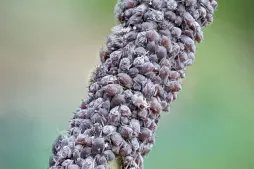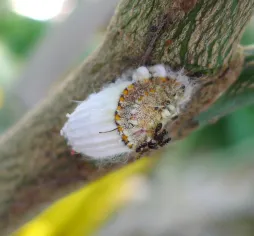Aloe vera, a succulent plant for indoor and outdoor use
Aloe vera has been cultivated around the Mediterranean since antiquity for its pulp, which has many virtues. The exact geographical origin of this plant from the Asphodelaceae family is unknown. But one thing is certain. Today, it can be found in living rooms and gardens the world over.
How to recognize Aloe vera, the real aloe?
Aloe vera is a succulent, rosette-shaped plant much larger than aristaloe aristata. It measures up to one metre in diameter and one metre in height.
The woody stem is almost invisible in young specimens. In older specimens, it can reach fifty centimetres.
The alternate leaves are intertwined. They grow in a spiral at the top of the stem. Gray-green, they are sometimes streaked with white. The gutter-shaped blades are hemmed with white spines. They are filled with a white gelatinous pulp. These are water reserves. They enable the plant to survive periods of drought.
In winter, a pale pink flowering spike emerges from the foliage. It bears spikes of tubular yellow flowers.
Aloe vera is used in the cosmetics industry and in traditional medicine. It's also a source of protein and vitamins. But don't eat your aloe ! The leaves contain a toxic juice that should not be consumed, and the World Health Organization (WHO) considers the pulp to be carcinogenic. If you grow your succulent as an ornamental plant, keep it out of reach of your pets.
Our maintenance tips
To grow aloe vera indoors, reproduce the conditions of their natural environment! Sun, warmth and little water. You can even take your succulent out to your windowsill or garden in summer.
Watering
Water only when the soil has completely dried out. Use room-temperature water with low calcium content, such as rainwater.
Water generously to allow the leaves to soak up the water. Make sure any excess water has drained away before replacing your Aloe vera. If necessary, remove any water that has accumulated in the saucer or planter.
Spray
Aloe vera grow in arid regions and do not like humidity. No need to spray them.
Repotting
In spring, transfer your Aloe vera to a larger pot, so that it can continue to grow.
Line the bottom of a pierced pot with a layer of gravel, small pebbles or clay balls for drainage.
Then pour in a light, well-draining potting soil. You can mix potting soil for green plants with sand, or use a substrate for cacti and succulents.
Plant your Aloe vera in the center. Add potting soil and tamp down. Water to remove air bubbles and facilitate rooting.
Fertilization
You can stimulate the development of your plant during its growth phase, in spring and summer, with fertilizer.
If you want to stimulate the growth of your Aloe vera, mix a liquid fertilizer for cacti and succulents with the water when watering.
Harvest
Aloe vera are renowned for their cosmetic properties. To harvest the gel from your plant, remove the fleshiest branches. They contain the most liquid.
Slice the leaf at the base with a clean knife or scalpel. Cut it into several segments and, again with your clean tool, remove the teeth on the edge. Open the piece in half and scoop out the translucent pulp with a spoon.
Be careful: aloe contains a yellow-brown liquid called aloin, which leaks from the green part of the leaf when you cut it. This is a toxic substance that must not be mixed with the gel.
Your plant may also have been exposed to pollution and pesticides. It is therefore possible that its gel is contaminated and unfit for consumption.
Prune
Prune the leaves when they are dry, but do not prune your Aloe vera. Cut leaves do not grow back.
Plantation
Once the last spring frosts have passed, you can plant.
Where's the best place to plant your Aloe vera? A sunny spot at the top of a slope, to encourage rainwater drainage.
Dig a large hole to give the roots room to spread out. As for repotting, place a layer of gravel at the bottom, followed by a layer of substrate. Place your plant in the center and cover with soil, possibly enriched with leaf compost. Press down to eliminate air pockets and water.
Cutting
Cutting is carried out during the strong growth phase, generally in spring and early summer.
To remove the shoots that appear at the base of the plant, carefully remove it from the soil. Separate the young shoots without damaging the root system.
Prepare a pierced terracotta pot. Block the hole with a pebble and lay a bed of gravel. Pour in a substrate composed of one third potting soil, one third soil and one third sand to promote drainage. Plant your offshoot, tamp it down and add a layer of sand to the surface.
Place your new succulent in a bright room, but without direct sunlight and with a temperature of at least 18 degrees.
Between two applications of water, check that the substrate has dried out, as you would with a mature plant.
Diseases / Threats
Information
| Family | Asphodelaceae - Asphodelaceae |
| Type | Aloe - Aloe |
| Species | Aloe vera - Aloe vera |
| Lifecycle | Perennial |
| Foliage | Evergreen |
| Exposures | |
| Substrats | |
| Planting methods |
In pots In tubs Planter |
| Categories | |
| Tags |
Beginner Medicinal |
| Origins |
South Africa North Africa |
| Hardiness (USDA) | 10b |
| Leaf color |
|
| Flower color |
|
Discover plants from the same family
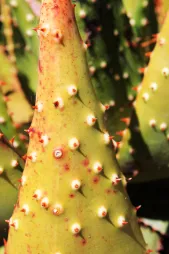
Aloe aculeata
Discover
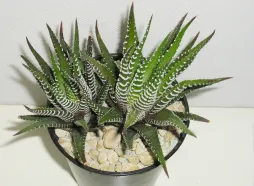
Haworthiopsis fasciata
Discover
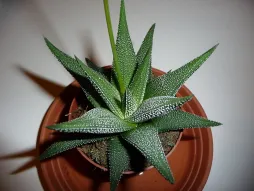
Haworthiopsis attenuata
Discover
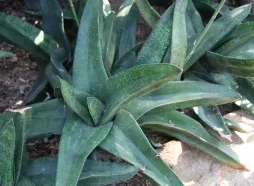
Gasteria acinacifolia
Discover
Find out more
- Aloe aculeata
- Aristaloe aristata
- Our 15 favorite succulents for your home
- How to get rid of scale insects?
- 16 fast-growing houseplants for busy gardeners
- 20 easy-to-care-for winter houseplants
- Living room, bedroom or bathroom: which houseplant is right for each room?
- Chez Camille, plants as sole decoration
- Ten maintenance-free houseplants














